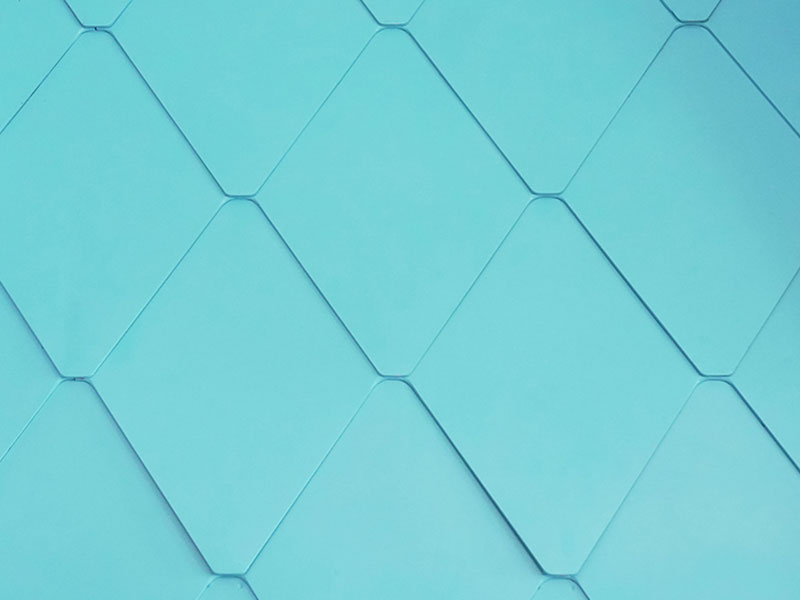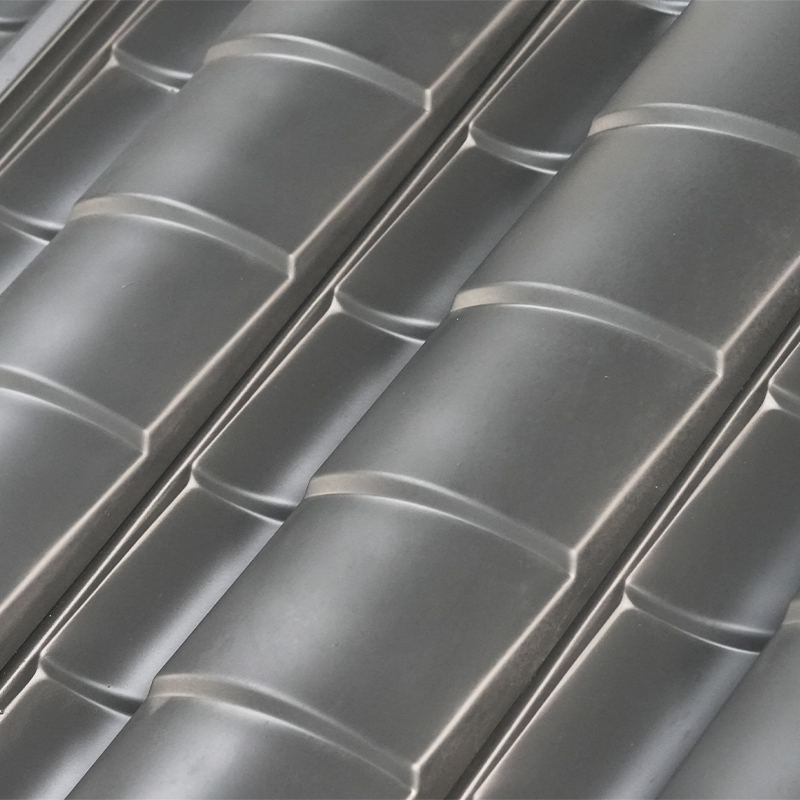When it comes to choosing a roofing material for your home or commercial building, two of the most durable and popular options are metal roofing and concrete roof tiles. Each brings a unique set of advantages and challenges, and the decision ultimately depends on factors like climate, architectural style, budget, and long-term performance expectations.
Among metal roofing types, roof metal flat tiles have gained particular attention in recent years for combining the sleek appearance of flat tiles with the durability of metal. In this article, we’ll take a detailed look at how metal roofing compares to concrete tile roofing—focusing on performance, aesthetics, cost, longevity, and installation—and help you determine which material might best suit your project.
Content
- 1 1. Overview: What Are Metal Roof Flat Tiles and Concrete Roof Tiles?
- 2 2. Durability and Lifespan
- 3 3. Weight and Structural Considerations
- 4 4. Aesthetic Options and Visual Appeal
- 5 6. Installation and Maintenance
- 6 7. Energy Efficiency and Insulation
- 7 8. Environmental Impact
- 8 9. Noise and Acoustics
- 9 Final Thoughts
1. Overview: What Are Metal Roof Flat Tiles and Concrete Roof Tiles?
Roof Metal Flat Tiles
Roof metal flat tiles are a type of metal roofing that mimics the appearance of flat concrete tiles or slate while offering the lightweight and corrosion-resistant benefits of metal. These tiles are typically made from materials such as:
Galvanized steel
Aluminum
Zinc
Copper (premium applications)
They can be finished with powder coating, stone coating, or paint systems for additional protection and aesthetic variety. Roof metal flat tiles are modular, interlocking panels that lay flat and form clean lines, suitable for modern and traditional designs alike.
Concrete Roof Tiles
Concrete tiles are made by mixing sand, cement, and water, then molding and curing them under high pressure. They are thicker and heavier than metal and come in several profiles:
Flat tiles
S-shaped or barrel tiles
Interlocking tiles
Concrete roof tiles are known for their classic appearance, especially on Mediterranean or Spanish-style homes. They can be colored throughout or surface-painted.
2. Durability and Lifespan
Metal Roofing
Lifespan: 40–70 years (depending on material and coating)
Resistance: High resistance to hail, wind, fire, and corrosion
Performance in harsh climates: Excellent in snow, rain, and extreme heat
Metal roof flat tiles are designed to withstand severe weather and do not absorb water. Coated metal tiles resist rust and UV damage, and unlike concrete, they won’t crack under freeze-thaw cycles.
Concrete Roofing
Lifespan: 50–100 years, with proper maintenance
Resistance: Good resistance to fire and hail, but prone to cracking under impact
Performance in harsh climates: May absorb water and require sealing
Concrete tiles are sturdy but brittle. Over time, they can crack or break from foot traffic or falling debris. Moisture absorption may lead to algae growth or increased roof weight.
3. Weight and Structural Considerations
Roof Metal Flat Tiles
Lightweight: Typically 1.5 to 2 pounds per square foot
Ideal for retrofits: Metal tiles are often used in reroofing without structural reinforcement
Lower shipping and labor costs
Metal roofing is significantly lighter than concrete, reducing load on trusses and the overall structure. This makes it ideal for both new construction and renovation projects where structural capacity is limited.
Concrete Tiles
Heavyweight: Can range from 9 to 12 pounds per square foot
Structural support required: Often needs additional reinforcement during installation
More expensive transportation and installation
The heavy weight of concrete roof tiles may result in higher construction costs and longer installation times.
4. Aesthetic Options and Visual Appeal
Metal Roofing
Roof metal flat tiles can replicate the look of slate, concrete, or even wood shakes while offering a wide variety of color and finish options. The clean, minimal appearance is ideal for:
Modern architecture
Transitional homes
Energy-efficient buildings
Moreover, metal tiles do not fade as quickly as concrete, and color-coated finishes maintain their appearance over time.
Concrete Tiles
Concrete tiles offer a classic and textured look that suits traditional styles like:
Spanish villas
Mediterranean houses
Rustic or mission-style homes
Although they are available in multiple colors and profiles, painted finishes on concrete may fade more quickly, requiring recoating over time.
5. Cost Comparison
| Category | Roof Metal Flat Tiles | Concrete Roof Tiles |
| Material Cost (avg) | Moderate to high | Moderate |
| Installation Cost | Lower (due to lightweight) | Higher (due to weight) |
| Maintenance Cost | Low | Medium |
| Long-Term Cost | Lower over time | Higher with repairs |
While the initial cost of metal roofing may be slightly higher, the lower maintenance and repair costs often make it more cost-effective over the roof's lifetime. Concrete tiles may require more frequent repairs, especially in areas with hail or seismic activity.
6. Installation and Maintenance
Metal Roofing Installation
Quicker and easier due to lightweight panels
Lower labor costs
Fewer underlayment requirements in many climates
Interlocking systems improve water tightness
Roof metal flat tiles usually install faster than concrete tiles and create fewer complications on-site. They're ideal for large projects where time efficiency is a priority.
Concrete Roofing Installation
Requires more labor and time
Needs heavier-duty fasteners and framing
More complex logistics for transportation and lifting
Risk of breakage during handling
Additionally, if a tile cracks, it must be replaced carefully to avoid damaging adjacent tiles, making repairs more labor-intensive.
7. Energy Efficiency and Insulation
Metal Roofing
Reflects solar radiation, reducing heat absorption
Compatible with cool roof coatings
Can be installed with radiant barriers or insulation underneath
Roof metal flat tiles are particularly effective in hot climates, helping reduce cooling costs and improving overall energy performance.
Concrete Roofing
Thermal mass helps moderate interior temperatures in some climates
May absorb and retain heat, depending on roof orientation and ventilation
Typically requires underlayment insulation
While both materials can support energy-efficient roofs, metal roofing performs better in terms of solar reflectivity and heat dissipation.
8. Environmental Impact
Metal Roofing: Often made from recycled materials and fully recyclable at end of life. Installation results in less construction waste.
Concrete Tiles: Energy-intensive to manufacture and more difficult to recycle. Cracked tiles often end up in landfills.
If sustainability is a priority, roof metal flat tiles offer a greener roofing solution.
9. Noise and Acoustics
One concern often raised with metal roofs is noise during rain or hail. However, this can be minimized with:
Solid sheathing
Insulated underlayment
Sound-dampening layers
Concrete tiles naturally provide better acoustic insulation, but the gap has closed significantly with modern metal roofing systems.
10. Summary: Which One Should You Choose?
| Criteria | Roof Metal Flat Tiles | Concrete Roof Tiles |
| Durability | High | High (but brittle) |
| Weight | Lightweight | Heavy |
| Installation | Easier and faster | Slower, more complex |
| Maintenance | Minimal | Occasional tile replacement |
| Aesthetics | Modern or slate-like | Classic, Mediterranean |
| Energy Efficiency | High | Moderate |
| Environmental Impact | Recyclable, eco-friendly | Heavier footprint |
| Cost Over Time | Lower | Higher |
Final Thoughts
Both metal and concrete tile roofing offer robust solutions for long-term roof performance. However, roof metal flat tiles provide a compelling alternative for homeowners and architects looking for a durable, lightweight, and modern-looking option. Their resistance to weather, ease of installation, and reduced maintenance needs make them increasingly popular for both residential and commercial applications.
If you're planning a new build or a roof replacement, consider consulting with a roofing professional to evaluate your structure, climate conditions, and budget. Whether you lean toward the classic charm of concrete or the contemporary resilience of metal, the right choice will add lasting value and protection to your property.




 English
English русский
русский Español
Español عربى
عربى















